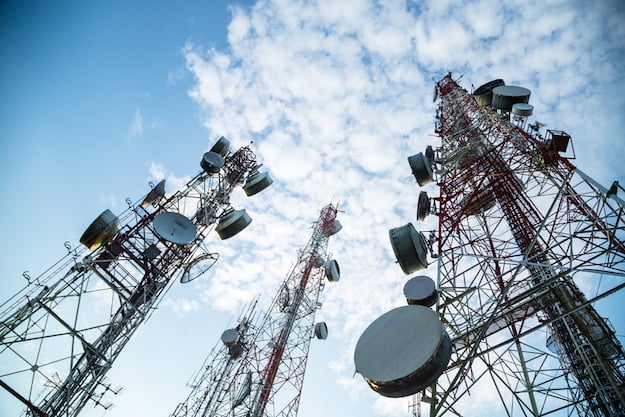The Growing Demand of Thermal Management in Telecommunications

Although it’s well understood that the effective thermal management of telecommunications equipment is crucial to ensure long life and reliable operation, designers are faced with many challenges as they attempt to control costs yet provide an effective service. This has led to the decentralization of telecommunications equipment away from protected environments and an increase in the use of smaller enclosures that are often located outdoors and in remote locations.
As a result, it’s become increasingly necessary to use enclosure cooling systems to ensure the temperature and humidity of telecommunications equipment within these enclosures are controlled within safe limits.
Engineering Guidelines
Telcordia specification GR-3108-CORE for outdoor equipment calls for compliance with normal operating temperatures of 5°C to 40°C (41°F to 104°F) and 5 to 85% relative humidity in a controlled environment. To extend the life of electronic components, it is generally accepted that outside plant enclosure temperature be kept between 80°F and 95°F.
Heat Generation in Telecommunication Enclosures
Apart from the heat load of the communication equipment, a significant amount of heat is also generated by the equipment used to convert AC power to DC voltages, which powers the telecommunication equipment and charges backup batteries.
As mentioned previously, many telecommunication enclosures are located outdoors and adequate allowance must be made for the effects of solar radiation. Solar Insolation charts show that during summer many parts of the U.S. receive more than 0.6 kWh of solar energy per square foot per day. This level of radiation makes a significant contribution to the total enclosure heat load.
It’s clear from the above that maintaining the relatively moderate temperatures recommended in the ASHRAE guidelines requires the provision of enclosure cooling.
Low Power Cooling Solutions
Provided the enclosure heat load is not too high, it may be possible to control the temperature by ventilating the enclosure using fans. In other instances, especially if the enclosure should be sealed to protect from outdoor contaminants, an air-to-air heat exchanger represents an excellent solution. Thermal Edge’s innovative heat pipe technology requires no power except that needed to run the air circulation fans. Depending upon the model selected, an air-to-air heat exchanger will make as much as 40 watts per degree Fahrenheit temperature difference.
Enclosure Air Conditioners for Higher Heat Loads
In situations where the ambient temperature is high, air borne contaminants are present, or in enclosures with a significant heat load, the most effective method of cooling is the use of an enclosure air conditioner. Thermal Edge air conditioners use an adjustable digital controller for precise temperature control, and, due to the inherent ability of air conditioners to remove moisture from the air, it’s possible to reduce the relative humidity inside the enclosure.
Thermal Edge’s enclosure air conditioners are designed for efficiency and use high quality rotary compressors, a thermal expansion valve, and an energy reducing condensate disposal system. Thermal Edge enclosure air conditioners consume less power than other air conditioners.
Ensure Telecom Reliability through Managing the Heat Load
Modern telecommunication equipment ensures fast and easy communication but is susceptible to malfunction if allowed to get too hot. Readily available research demonstrates that the life and reliability of electronic equipment is directly dependent upon its temperature and that early failure is likely at high ambient temperatures. Ensure reliability and long life of your telecommunication equipment by choosing one of Thermal Edge’s innovative enclosure cooling solutions. Ask about 48 VDC powered air conditioners, heat exchangers and filtered fans. Contact us today!

